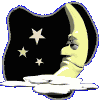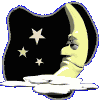 |
||
 |
||
CITSO Blog: King's Crown and the Crown Jewels
NGC 7129 (nebula) & NGC 7142 (cluster) in Cepheus
Imaged August 15 and October 7 2012
Click the image for the high resolution version!
Winner of the 2013 edition of the SkyNews annual imaging contest, in the category of "Best Deep-Sky Digital High-Resolution Imagery"




























NGC 7129 and NGC 7142 in Cepheus.
Imaged between August 15 & October 7 2012, 12.5 hours total.
L=350 minutes (1X1), R=130m, G=110m, B=160m (all 2x2), Subs=10m.
Telescope=PlaneWave CDK17, Camera=Apogee U16M, Mount=Paramount ME.
Astrodon filters and MOAG, Starlight Xpress Lodestar guide camera.
Frames acquired with ACP controlling TheSky X, MaxIm DL, and Focusmax.
Processed with PixInsight and CCDInspector.
This was the result of 7 nights of imaging between August 15 and October 7 2012.
The frame features a beautiful pairing of the reflection nebula NGC 7129, and a star cluster in the bottom left corner, NGC 7142. Now, this will be a bit of a stretch (astro-imager pun intended!), but could the reflection nebula be seen as the King's Crown, and the rich star field as the Crown Jewels ;)?
Look below for excerpts that I've pulled from two APOD explanations of the astrophysics on display in this field of view.
The field is almost filled with a faint absorption nebulosity that varies strongly in opacity across the frame, and which in some regions has a very apparent reddish hue. Many excellent renditions of NGC 7129 accentuate this absorption nebulosity, as in the beautiful image by Bob and Janice Fera (that's an APOD!) and another gorgeous example by Oleg Bryzgalov. I elected to apply a much more modest stretch to that background, which I think results in a much stronger sense of depth in the reflection nebula: does it almost seem to pop out of the frame like a feature in a page from a pop-up book ;)?
I experimented alot with that feature of the image before settling on the above as my "official" version - here's another one, with a stronger stretch applied to the absorption nebula. Which one do you prefer? A subjective judgment to be sure, but just as surely an artistic one!
Finally, here are two APOD description of this region, incomparably clear explanations chock-a block with science, as with all APOD captions! Be sure to check the actual APOD posts, which includes links to many sources.
This was the caption for a stunning wide-field portrait by Tony Hallas:
"... toward the constellation Cepheus [is] an intriguing visual pairing of dusty reflection nebula NGC 7129 [centre] and open star cluster NGC 7142 [lower left]. The two appear separated by only half a degree on the sky, but they actually lie at quite different distances. In the foreground, dusty nebula NGC 7129 is about 3,000 light-years distant, while open cluster NGC 7142 is likely over 6,000 light-years away. In fact, the pervasive and clumpy foreground dust clouds in this region redden the light from NGC 7142, complicating astronomical studies of the cluster. Still, NGC 7142 is thought to be an older open star cluster, while the bright stars embedded in NGC 7129 are perhaps a million years young. The telltale reddish crescent shapes around NGC 7129 are associated with energetic jets streaming away from newborn stars. Surprisingly, despite the dust, far off background galaxies can be seen in the colorful cosmic vista."
This was the caption for that beautiful portrait of NGC 7129 by Bob and Janice Fera:
"Young suns still lie within dusty NGC 7129, some 3,000 light-years away toward the royal constellation Cepheus. While these stars are at a relatively tender age, only about a million years old, it is likely that our own Sun formed in a similar stellar nursery some five billion years ago. Most noticeable [are] the lovely bluish dust clouds that reflect the youthful starlight, but the smaller, deep red crescent shapes are also markers of energetic, young stellar objects. Known as Herbig-Haro objects, their shape and color is characteristic of glowing hydrogen gas shocked by jets streaming away from newborn stars. Ultimately the natal gas and dust in the region will be dispersed, the stars drifting apart as the loose cluster orbits the center of the Galaxy."
DownX2 for Asterik


Copyright © 2014 Howard Trottier





